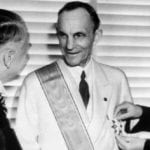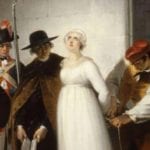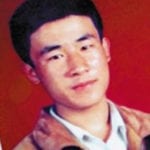 Weird Stuff
Weird Stuff  Weird Stuff
Weird Stuff  Our World
Our World 10 Ways Your Christmas Tree Is More Lit Than You Think
 Movies and TV
Movies and TV The 10 Coolest Stars to Set Sail on The Love Boat
 History
History 10 Things You Didn’t Know About the American National Anthem
 Technology
Technology Top 10 Everyday Tech Buzzwords That Hide a Darker Past
 Humans
Humans 10 Everyday Human Behaviors That Are Actually Survival Instincts
 Animals
Animals 10 Animals That Humiliated and Harmed Historical Leaders
 History
History 10 Most Influential Protests in Modern History
 Creepy
Creepy 10 More Representations of Death from Myth, Legend, and Folktale
 Technology
Technology 10 Scientific Breakthroughs of 2025 That’ll Change Everything
 Weird Stuff
Weird Stuff Ten Bizarre Facts About The Doge Meme
 Our World
Our World 10 Ways Your Christmas Tree Is More Lit Than You Think
 Movies and TV
Movies and TV The 10 Coolest Stars to Set Sail on The Love Boat
Who's Behind Listverse?

Jamie Frater
Head Editor
Jamie founded Listverse due to an insatiable desire to share fascinating, obscure, and bizarre facts. He has been a guest speaker on numerous national radio and television stations and is a five time published author.
More About Us History
History 10 Things You Didn’t Know About the American National Anthem
 Technology
Technology Top 10 Everyday Tech Buzzwords That Hide a Darker Past
 Humans
Humans 10 Everyday Human Behaviors That Are Actually Survival Instincts
 Animals
Animals 10 Animals That Humiliated and Harmed Historical Leaders
 History
History 10 Most Influential Protests in Modern History
 Creepy
Creepy 10 More Representations of Death from Myth, Legend, and Folktale
 Technology
Technology 10 Scientific Breakthroughs of 2025 That’ll Change Everything
10 Famous People Who Were Secretly Spying on Us
All our heroes get up to naughty deeds every now and then. Still, we tend to forgive them. These little things don’t bother us. So what if a celebrity was rude to his fans? So what if one gets his ideas from drugs? So what if one conspired with Heinrich Himmler to bring England under Nazi rule?
See Also: 10 Rogue Spies In History
In the 20th century, a strange number of extremely prominent people famous for their works of art or invention were actively conspiring against us. It’s mystifying that people in the forefront of the public eye were actively working on conspiracies that mainly amount to treason—but they did. And in most of these cases, they got away with it.
10 Roald Dahl
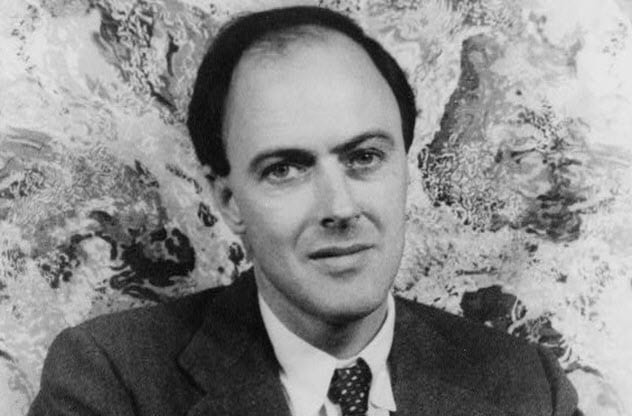
Roald Dahl is known and beloved by children everywhere for his magical stories like Charlie and the Chocolate Factory and James and the Giant Peach. He’s a legendary children’s entertainer who is ever full of surprises. Many have been shocked to learn that he has a robust collection of excellent literature for adults or that he wrote the screenplay for the Bond film You Only Live Twice.
However, much more shocking is the job he held before becoming a writer: spying on Americans.
In the early years of World War II, the United States was an uninvolved party. The nation was isolationist by nature, and most wanted to stay out of the dangerous conflict. And so, Roald Dahl was brought in.
His job was something that would never be allowed in one of his books. In the hopes of learning secrets and changing U.S. policy, he was tasked with drinking with—and sleeping with—wealthy women.
Dahl probably was not directly ordered to sleep with beautiful women, but he chose it as the main tool of his trade anyway. The British government certainly didn’t stop him. When he was wooing Clare Boothe Luce, the wife of Time magazine’s publisher, Dahl reportedly complained that she was too frisky. But he was ordered to get “back into the bedroom.”[1]
Dahl was about as useful as you’d imagine a person sleeping with socialites would be. The would-be spy was described as completely unable to keep a secret, and the best information he seems to have reported back was gossip that Franklin D. Roosevelt might be having an affair.
9 Ernest Hemingway
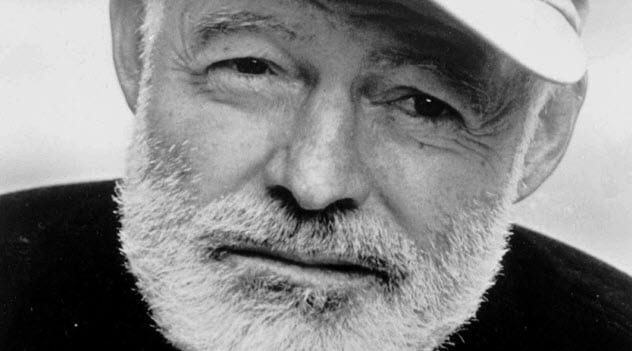
In his last days, Ernest Hemingway was relentlessly shadowed by the FBI. J. Edgar Hoover had taken a special interest in Hemingway because Hoover was convinced that the legendary writer was a secret agent selling information to the KGB.
The surveillance left Hemingway so paranoid that his friends were convinced he was going insane. In time, even Hemingway believed it. In 1960, he checked himself into the Mayo Clinic, hoping for an end to his paranoia. The next year, he killed himself.
To this day, the tragedy of Hemingway’s death has been directly blamed on Hoover’s surveillance, which was based on the mad notion that a famous author was a Soviet spy.
The thing is—Hoover was right. Hemingway really was a Soviet spy. Recently released KGB files reveal that Hemingway met with Soviet agents in 1941 and “repeatedly expressed his desire and willingness” to spy for them.[2]
He never provided anything of value, but there’s reason to believe that it wasn’t for lack of trying. Shortly after meeting with Soviet operatives, Hemingway stopped writing and volunteered to work with U.S. intelligence—an act some people think was an attempt to get information.
Hemingway was on patrol for German U-boats and was remarkably unhelpful. The most generous account of his efforts suggests that he may have “actually spotted a U-boat, at least once.” But the military didn’t put much stock in the sighting. He did, however, spend his time making coded notes, which some people have now suggested may have been intended for the Soviets.
8 The Duchess Of Windsor
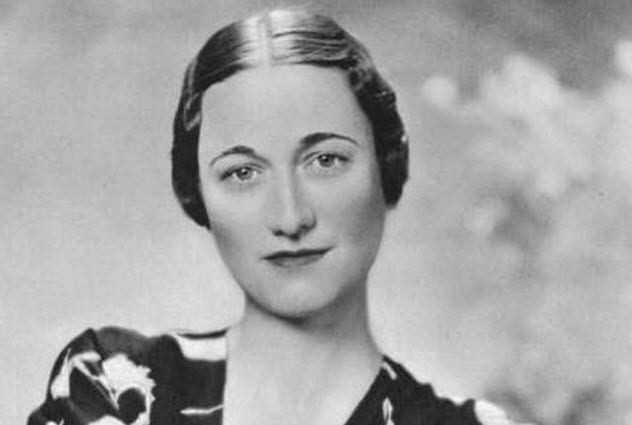
Wallis Simpson was a real-life fairy-tale princess. After her first divorce, the remarried Wallis caught the eye of Edward VIII, then king of England, who fell madly in love with her. So much so, in fact, that when his family objected to their love, he gave up the throne in December 1936 to be with her. That passed the crown to King George VI, the father of the current Queen Elizabeth II.
In May 1937, Wallis’s divorce from her second husband was finalized. She married Edward (then duke of Windsor) one month later. With that, Wallis became the Duchess of Windsor.
It has all the makings of a Disney film—except, y’know, the parts where they conspired with Hitler to overthrow England. Edward loved Wallis, but many rumors suggested that his feelings weren’t reciprocated.
Wallis reportedly mocked her husband for being impotent and carried on an affair with the Nazi foreign minister, Joachim von Ribbentrop. In turn, von Ribbentrop reportedly sent the duchess 17 carnations every day, representing the number of times the two had slept together.
The romantic gesture was apparently enough for her to give information to the Nazis. Wallis retreated with the duke to Biarritz and gave her address to von Ribbentrop. He had it immediately used for propaganda. The Nazis announced the room number on the radio within minutes of the couple checking into their hotel, using it as proof that the British were on the run.[3]
Simpson might not have been a great wife, but that doesn’t mean that Edward was innocent. According to FBI information, Edward was just as willing to help out the Nazi cause.
Before he abdicated the throne, Edward was extremely friendly with Adolf Hitler, who expressed a desire to use Edward as a “puppet.” This friendliness continued when the war started, which led to rumors that Wallis and Edward were working with Hitler.>FBI information, Edward was just as willing to help out the Nazi cause.
Before he abdicated the throne, Edward was extremely friendly with Adolf Hitler, who expressed a desire to use Edward as a “puppet.” This friendliness continued when the war started, which led to rumors that Wallis and Edward were working with Hitler.
7 Cary Grant
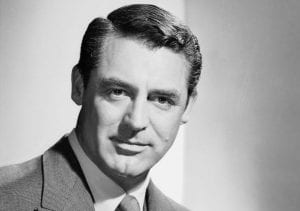
Cary Grant wasn’t just a spy in Hitchcock’s “Notorious,” he was one of the greatest Nazi hunters of Hollywood during World War II. According to biographer Charles Higham, at least two of the most popular leading men in Hollywood in the 1940s—Errol Flynn and Cary Grant—were involved in espionage, though on opposite sides.
Higham reported that Flynn was a Nazi sympathizer who had visited Germany before the war and even met with Adolf Hitler.
Grant, who was born in Britain and had several relatives living in Bristol during the war, revealed Flynn’s pro-Nazi leanings to British agents in Washington and kept them informed about other Nazi sympathizers in Hollywood.
He also worked with Roald Dahl and other British agents in shaping the British propaganda messages aimed at discrediting America First and other isolationist groups in the United States.
While Grant never physically engaged in combat during WWII, he certainly did his part financially. The movie star donated his salaries from The Philadelphia Story and Arsenic and Old Lace to the British War Relief Effort and the U.S. War Relief Effort. In 1947, King George VI awarded Grant the King’s Medal for Service in the Cause of Freedom to thank him for his monetary contributions to the allied powers.
The confirmation of Grant working with British agents is documented in the reports of MI6 and many participants’ diaries.[4]
6 Arnon Milchan
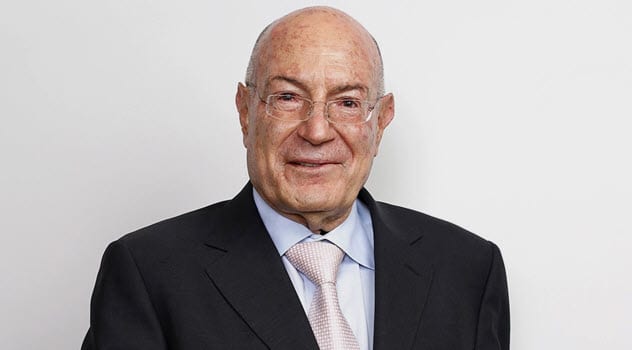
Israeli businessman and film producer Arnon Milchan has produced some of the most beloved movies of our time—from Pretty Woman to Fight Club to Gone Girl. In fact, the Hollywood luminary has pointed his camera at some things that have changed the face of film.
And some other things that have changed the nuclear program of Israel.
Milchan has always been wealthy—so much so that Israel has been able to use bank accounts set up by him to buy helicopters and missiles. In addition, he brokered deals and made purchases that helped Israel boost its nuclear program.
He also helped South Africa to defend itself from criticism of its apartheid system—not because he was a staunch advocate of it but because they supplied Israel with uranium in return.
Milchan was more than a banker, though. He actually talked his way into a German nuclear facility and convinced them to let him take pictures. He sent the photographs back to Israel to help them build a nuclear arsenal.
So how do we know all of this?
This time, it’s not because of some ambiguous note in a journal. Milchan directly said, “I did it for my country, and I’m proud of it.”[5]
Even before that, his status as an Israeli spy gathering nuclear weapons was a poorly kept secret. Other Hollywood personalities admit that they suspected it but didn’t question him. Robert De Niro said that he didn’t think it was any of his business, and Milchan has suffered no consequences for his activities.
5 Leon Theremin
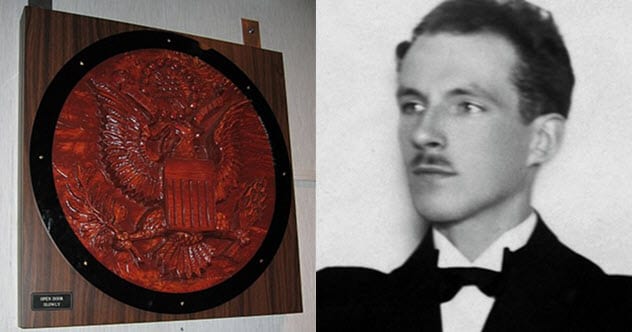
Leon Theremin was a Russian inventor who is best known for the instrument that bears his name. He designed a futuristic-sounding musical device that is played without touching it. It’s that strange sound you hear in science fiction films from the 1950s and on Radiohead albums. It sounds like a ghost singing. Theremin was a pioneer in musical innovation, responsible for a great deal of progress in electronic music.
Theremin patented his eponymous musical instrument in the US in 1928.
When he returned to the Soviet Union in 1938, he was quickly imprisoned. Ultimately, he was sent to work in a secret Soviet laboratory in the Gulag camp system with prominent engineers and scientists. While there, Theremin invented the Buran eavesdropping system to help the Soviets spy on their enemies.
He was also responsible for another of the Soviets’ most successful spying operations.
Theremin’s second most famous invention was “The Thing,” a listening device that didn’t require a power source. It was successfully used to spy on the US government.
Theremin’s “Thing” was hidden inside a wooden seal of the United States and presented to the US ambassador to the Soviet Union by Soviet schoolchildren in 1945. The kind gesture touched the ambassador, who hung it up in his home. He didn’t know that the USSR had men sitting outside the embassy in a van, listening to everything he said.
As this unique device didn’t need power, The Thing was nearly impossible to discover. So it took seven years before anybody found it. Finally, British broadcasters picked up its radio waves, which led the Americans to track the source and discover the listening device.[6]
As for Theremin, he was released from the Gulag laboratory in 1947. But he continued to work with the KGB until 1966.
4 Kim Philby
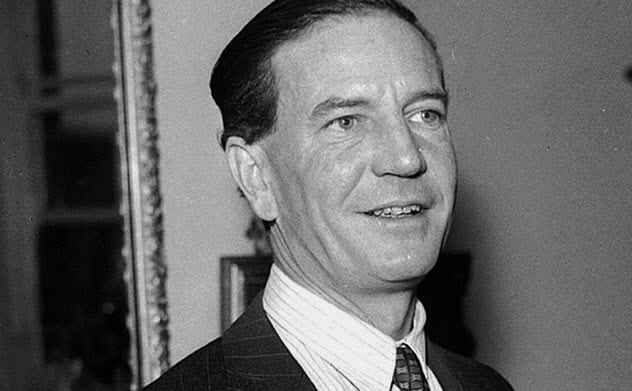
Kim Philby was a British spy—and a major one at that. Philby worked his way up to the head of MI6’s anti-Soviet division. It was an incredible accomplishment for anyone but especially for Kim Philby.
Because Kim Philby was secretly a Soviet spy.
At the time, MI6’s anti-Soviet division was littered with Soviet agents. It was an incredibly effective campaign of espionage against a nation that had excelled at repelling enemy spies in the past.
Philby successfully obtained and shared information with the Soviet Union until another KGB agent informed the US government of the presence of five spies in British Intelligence.
As the agents closed in on him, Philby protected himself by selling out some of his cohorts. The agents came in closer, however, and Philby was forced to resign. He was not found out until he defected to the USSR in 1963.
Even after he escaped to the Soviet Union, Philby had an incredible impact. The CIA spent another 10 years in a search for traitors. No longer trusting the work they had, they were convinced that they had been infiltrated the same way.[7]
3 Robert Hanssen
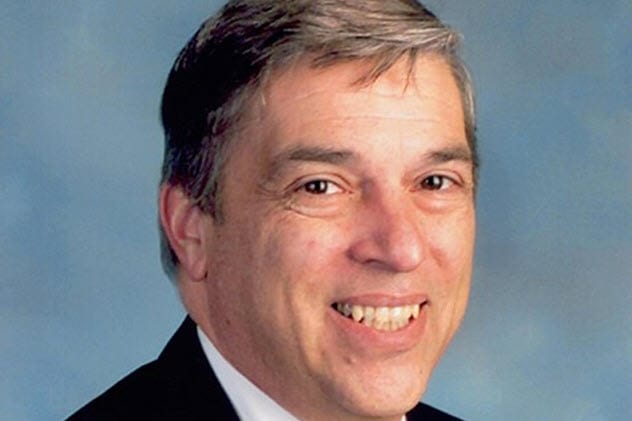
The FBI had a mole too. Like Philby, Robert Hanssen worked for the counterintelligence unit while secretly feeding information to the Soviet Union. Hanssen managed to work as a double agent for about 20 years. Starting in 1985, he collected information on computer disks and dropped off packages for Soviet agents.
The method was incredibly successful. The FBI has admitted that more than 6,000 pages of confidential information were compromised, including dozens of US documents classified as “Top Secret.”[8] He was also paid handsomely, earning $600,000 for his services. At least, that’s what the FBI can prove.
Apparently, Hanssen continued spying during the collapse of the Soviet Union and the reformation of modern Russia. Ultimately, he was arrested while dropping off documents in February 2001.
Hanssen has lived a total double life. His wife was completely unaware that he was a spy. During a polygraph test, she testified that Hanssen told her that he was “tricking” the Russians.
2 Mata Hari
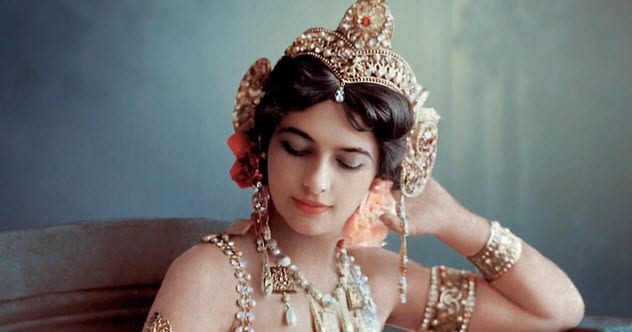
Mata Hari was a Dutch exotic dancer, one of the most famous in Paris during World War I. Posing as an Indian, she performed erotic dances in front of thousands of men and sold her love freely to aristocrats and the elite of Paris. It made her the perfect German spy.
The French believed that Mata Hari worked for them and asked her to share anything she learned from her romantic conquests with the military. Since her lovers included German officers, she had a great opportunity to glean information.
The French didn’t know that she’d already received the same offer from the Germans—and taken it. However, her movements began to seem suspicious. The French started tracking her and soon arrested her on their suspicions.
Mata Hari admitted that the Germans had paid her 20,000 francs to spy on the French. But she insisted that she had never passed on worthwhile information. Some still maintain that she was innocent.
Nonetheless, Mata Hari suffered for her actions. She was arrested in 1917 and sentenced to death. Before she faced the firing squad, she wrote two letters and spoke her final three words:
“I am ready.”[9]
1 Coco Chanel
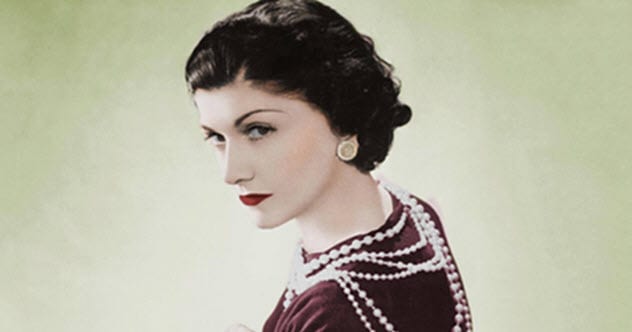
There’s a good chance that you or someone you know uses one of Coco Chanel’s products. Chanel No. 5 perfume is one of the most popular in the world, and her name is synonymous with fashion and high culture.
It’s less often linked to her time as a Nazi spy.
Chanel was in France when it was occupied. While others lamented the Nazi presence, Chanel openly embraced it. The “embraced” there is literal as Chanel quickly found herself sharing a bed with a Nazi officer named Baron Hans Gunther von Dincklage.
Chanel wrote off the romance with a witty remark, saying that a girl her age doesn’t have time to look at a man’s passport. In truth, though, she did look at his passport—and was apparently thrilled by it.
First, she tried to use German rule for profit. Chanel, who has been described as “fiercely anti-Semitic,” had sold her No. 5 perfume to a Jewish company and then tried (unsuccessfully) to use Nazi Aryanization laws to revoke their claim.
When Chanel signed up to be a Nazi spy, she was given the agent number “F-7124” and the code name “Westminster.” It seemed that her duties mainly involved helping to recruit other informants and spies who might be willing to give information to the Nazis.
She wasn’t content to settle for that, though. Chanel and her beau traveled to Berlin in 1943 to offer their services to Heinrich Himmler, who saw her as the perfect person to influence British policy. Chanel, who was friends with Winston Churchill, was dispatched to England to convince him to make a truce with the Nazis.[10]
Churchill never agreed to see her, so Chanel didn’t turn the tide of the war. He did, however, ensure that she got away safely afterward despite the intention of the French Resistance to have her executed as a spy. Thanks to her enormous influence, Chanel was allowed to escape to Switzerland with her Nazi lover and managed to hide her Nazi involvement almost entirely during her lifetime.
For more lists like this, check out 10 Famously Hard-Core Female Spies and 10 Nazi Spies and Their Espionage Plots In America.
About The Author: Mark Oliver is a writer and an English teacher. He can be visited online here.


